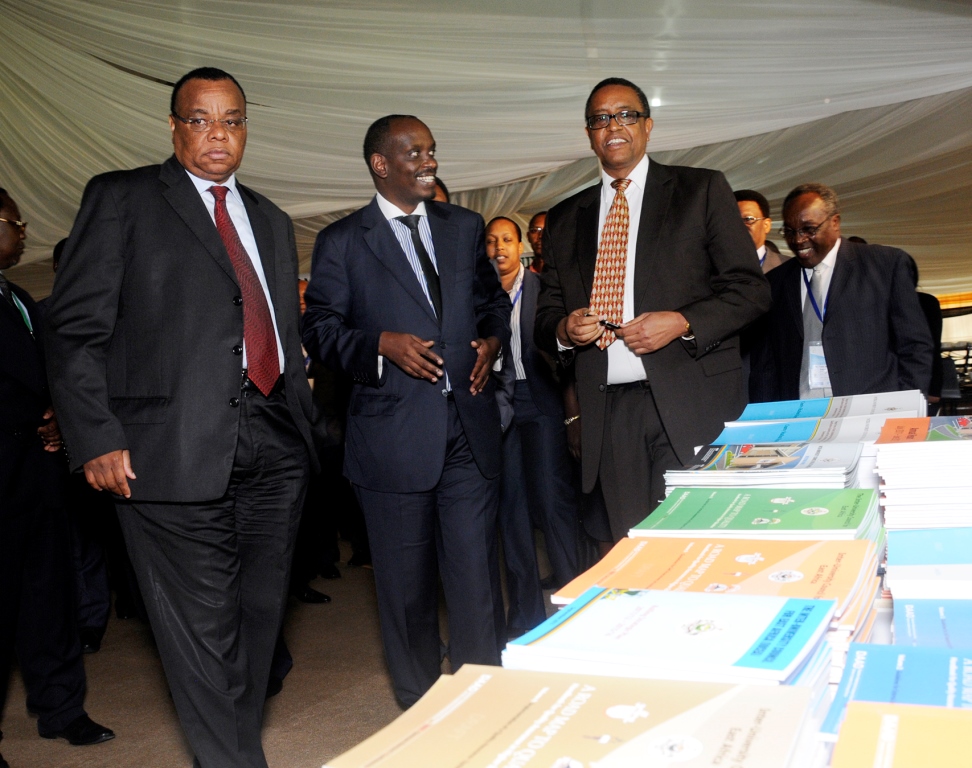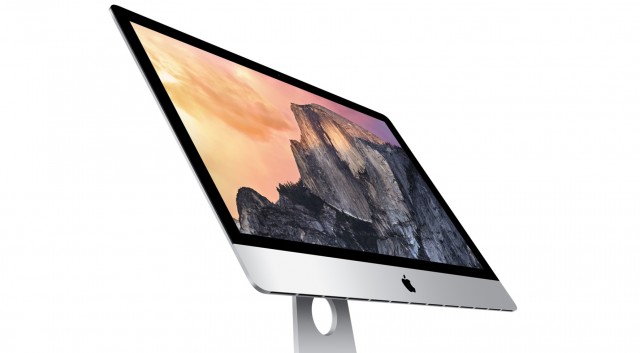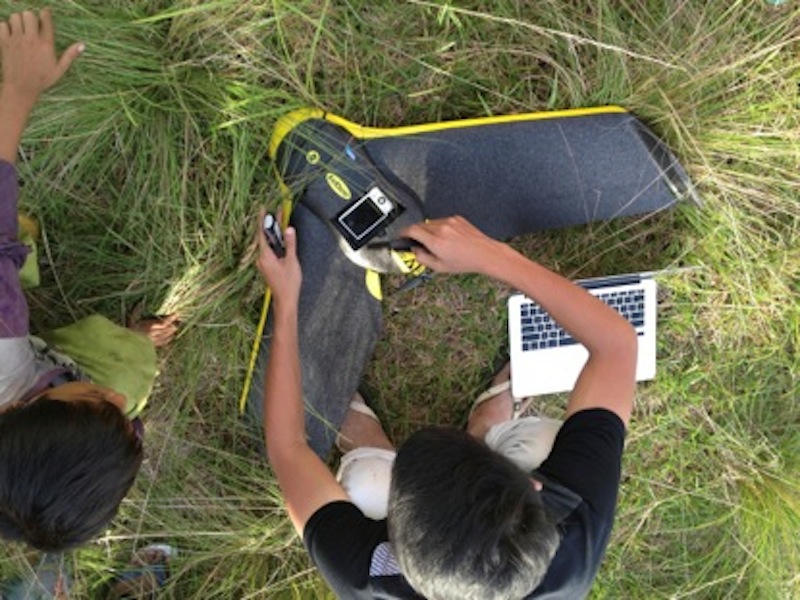Why Kenya police commander and interior minister had to leave office
Nairobi- Kenya president Uhuru Kenyatta convened three crucial meetings last week during which it became apparent that Interior Cabinet Secretary Joseph Ole Lenku and police chief David Kimaiyo could no longer remain in office, it has emerged.
The president has lately come under immense pressure over the failure by his security organs to tame banditry and terrorist attacks that have rocked the country.
Last Wednesday morning, president Kenyatta convened a meeting of the National Security Council (NSC) to discuss the reasons why security agencies had failed to detect and pre-empt the attacks, top government sources said Tuesday.
It is understood that the president and his deputy, Mr William Ruto, were furious that despite the government investing billions in equipping the police and increasing their numbers, cases of fatal attacks on Kenyans were on the increase.
Others who attended this meeting were outgoing Interior CS Mr Lenku, the just retired Inspector-General of Police, Mr Kimaiyo, Chief of Kenya Defence Forces Gen Julius Karangi, Interior Affairs Principal Secretary Monica Juma, Deputy Inspector Generals of Police Grace Kaindi, Samwel Arachi, National Intelligence Services director Philip Kamweru and CID director Ndegwa Muhoro.
Sources said Mr Lenku, Mr Kimaiyo, Gen Karangi and Maj Gen Kamweru were given opportunities to explain their achievements in preventing the attacks, where they had failed and reasons for the failure.
The four were also required to give suggestions on how they planned to improve so as to stop the killings, either by bandits or terrorists.
Apart from the challenges brought about by the Constitution, sources close to the meetings told the Nation that it became clear Mr Lenku and Mr Kimaiyo had also failed to collaborate in fighting crime.
“Questions were raised regarding their abilities to lead the dockets they held,” sources said.
Last Thursday at 6.30am, President Kenyatta and his deputy held another meeting at State House with Mr Lenku and Mr Kimaiyo where the two were asked to give suggestions on how they planned to improve their performances.
They were also asked if they would opt to quit their positions in the face of the difficulties they faced.
At the end of this meeting, it became clear to the president and his deputy that the two men tasked with the duty of keeping Kenyans safe and secure were not up to the task. It is understood the Jubilee leadership was convinced that Mr Lenku and Mr Kimaiyo had to go.
Around noon, President Kenyatta and his deputy held a Cabinet meeting where among other issues, the matter of insecurity and killing of Kenyans was broadly discussed. Even a brief from the Presidential Strategic Communications Unit never touched on insecurity.
This was after it was agreed that the security organs engage teams of the Senate and the National Assembly to amend any laws that make it difficult for them to be effective in their work.
In his speech on Tuesday, President Kenyatta confirmed: “In light of this, I directed my government’s security actors to engage with the members of the relevant committees of the legislature last week with a view to rectify administrative and legal hurdles that limit our ability to deal with the very real and existential threat that we face.”
Tuesday’s killing of 36 quarry workers in Mandera prompted immediate action from the president who chaired a special Cabinet meeting in the morning and which explains the sudden resignation of Mr Kimaiyo and the replacement of Mr Lenku with Kajiado Central MP Joseph Nkaissery.
Source: Daily Monitor
3rd East African Community (EAC) Academia-Public-Private-Sector Forum opens in Kigali
The 3rd East African Community (EAC) Academia-Public-Private-Sector Forum opened today in Kigali, Rwanda, with a call by His Excellency President Paul Kagame to the stakeholders to redesign and streamline the region's economic development approaches to meet the high expectations of the East African people.
President Kagame, who was represented by his Minister for Education Prof. Silas Lwakabamba at the official opening of the Forum, challenged the Academia-Public-Private Partnership to take advantage of the commitment of the EAC Partner States, as stipulated in Articles 79 and 80 of the Treaty for the Establishment of the EAC, in which the role of innovation is broadly spelt out.
The President urged the participants to borrow a leaf from other global experiences, whereby emerging economies and transition countries have increasingly recognized that knowledge, new technology and innovation were crucial elements for driving systematic and progressive socioeconomic development, and were vital for promoting a country's or region's competitiveness in the international economic order.
President Kagame commended the leadership and the entire Inter University Council for East Africa for their invaluable contribution through the development and implementation of various higher education harmonization strategies, frameworks, guidelines and standards, the impact of which will steer the region into a common higher education area.
The President also commended the Private sector through the East African Business council for playing its role as the key pillar in supporting the socio-economic development agenda of the EA, and in moving the regional integration forward.
The Chairperson of the EAC Council of Ministers, Hon. Phyllis J. Kandie, who was represented by Kenya's High Commissioner in Rwanda His Excellency John Mwangemi said the Forum came at a time when the EAC Partner States had great desire to transform their economies into a knowledge-based which could only be achieved and sustained by the development of a strong innovation system.
The Chairperson noted that there was urgent need to redesign the training curriculum and the way it is delivered so that the education and training systems are able to churn out graduates who are creative, innovative and entrepreneurial.
The Secretary General of the East African Community, Amb. Dr. Richard Sezibera is confident that Academia-Public-Private Partnership will take advantage of the available political commitment and enabling legal framework at the national and regional levels to drum-up and consolidate views of stakeholders to achieve the short and long term goals of the socio-economic development agenda of the Community.
Amb. Sezibera emphasized that the people of East Africa were eagerly looking forward to the impact and outcome of this partnership to transform the regional economies; promote industrialization and improve the livelihood of the common citizens.
The Chairperson of the East African Business Council, Mr. Felix G. N. Mosha noted that a new paradigm calls for effective interaction between Universities and the private sector to put East Africa in the main stream of technological revolution that would enable SMEs and large corporate entities alike to generate and use knowledge in order to achieve their innovative potential.
Mr. Mosha said collaboration between the private sector and the academia was an effective, practical and realistic way to carry out such development work, in addition to building the region's innovation capacity and intellectual capital.
The Executive Secretary of the Inter-University Council of East Africa (IUCEA) Prof. Mayunga Nkunya, disclosed that the Forum was geared towards coming up with practical strategies for implementing academia-public-private partnership platforms in the EAC to spur socio-economic development.
The delegates attending the Forum are drawn from the EAC Secretariat and Institutions, heads of higher education institutions, national commissions and councils for higher education, and national commissions and councils for science and technology, government institutions and ministries, international organizations, NGOs, academicians, students, private individuals, businessmen, media and stakeholders in academia and the private and public sectors in the Partner States.
The IUCEA, East African Business Council (EABC) and East African Development Bank (EADB) have jointly organized this year's Forum under the theme: "Harnessing East Africa's Innovation Potential".

Notes to Readers:
In 2011, the IUCEA and EABC entered into a partnership aimed at providing the point of connection between knowledge and human resources produced by higher education institutions in the region on the one hand, and the dissemination of the same to the private sector for their eventual diffusion into the productive, social and service sectors on the other.
The partnership focuses on (i) enhancing linkage between the private sector and higher education institutions; (ii) promoting the utilization of higher education research output and innovations by the private sector/business community; (iii) promoting consultative engagement in curriculum and research development and implementation; and (iv) jointly organizing dialogue forums and exhibitions.
The first Forum was dubbed "Higher Education Forum and Exhibitions", in Arusha, Tanzania in October 2012 followed by "Academia – Private Sector Partnership Forum" in Nairobi, Kenya on 24th – 26th October 2013, during which time the East African Development Bank (EADB) joined in as another partner.
21ST MEETING OF THE SECTORAL COUNCIL OF MINISTERS RESPONSIBLE FOR EAC AFFAIRS AND PLANNING ONGOING IN KIGALI

21ST MEETING OF THE SECTORAL COUNCIL OF MINISTERS RESPONSIBLE FOR EAC AFFAIRS AND PLANNING ONGOING IN KIGALI
East African Community Headquarters, Arusha, Tanzania, 27 October 2014: The 21st Meeting of the Sectoral Council of Ministers responsible for EAC Affairs and Planning (SCMEACP) is currently underway at the Lemigo Hotel in Kigali, Rwanda.
The meeting is considering the status of implementation of Previous Decisions of the SCMEACP; progress report on the status of implementation of the EAC Common Market; status of the EAC Institutional Review.
The meeting will also consider a proposal on the Tenure of Service for Professional Staff of the Community; report on Political Affairs; report of the 3rd Secretary General's Forum; status of implementation of the Video Conferencing Project; progress Report on the Elimination of Non-Tariff Barriers; and lastly progress report on COMESA-EAC-SADC Tripartite Arrangement.
The 21st meeting of the Sectoral Council will be held through the session of Senior officials from 27th to 29th October; the session of Permanent/Principal Secretaries from 29th to 30thOctober; and the Ministerial session is on 31st October 2014.
At the official opening of the session of Senior Officials this morning, the EAC Deputy Secretary General (Finance and Administration), Mr. Jean Claude Nsengiyumva expressed the Secretariat's appreciation to the Government and people of Rwanda for the warm and cordial hospitality extended to all delegations upon their arrival in this beautiful city of Kigali.
The Deputy Secretary General reiterated the critical role of the Sectoral Council in coordinating the regional integration process and said that as the integration process deepens and widens, the Senior Officials will be heavily relied on to provide rational strategies on the integration, noting that their pragmatic recommendations and guidance will assist in further advancing the cause of regional integration and development process.
10 things you should know about iPhone 6

Apple on Tuesday unveiled iPhone 6 and iPhone 6 plus among other products.
Here are features about the iPhone 6 that you need to know:
1 It has a 4.7 inch screen. Larger than any of the previous iPhones in the market.
2 It has a smooth metal surface that seamlessly meets the new Retina HD display.
3 It is 6.9 mm thin. Probably the thinnest Apple ever unveiled.
4 It has a retina HD display with a bigger Multi Touch display, brilliant colors and higher contrast at even wider viewing angles.
5 It has a resolution of 1334 by 750.
6 It has an iSight camera that has a new sensor with Focus Pixels and new video features and time-lapse video mode.
7 It is built on 64-bit desktop-class architecture with a new A8 chip that delivers more power.
8 It has a barometer for the weather lovers and an accelerator for those exercising.
9 It has faster LTE download speeds with up to three times faster speed when connected to Wi-Fi.
10 It has Touch ID technology that can be used to make purchases from iTunes, iBooks, and the App Store without having to enter a password.
Source:monitor.co.ug
New movie Torn created for new reality show
Lorem ipsum dolor sit amet, consectetur adipiscing elit. Sed nisi ipsum, aliquet ac vulputate eu, congue nec diam. Mauris ligula metus, tempus eget scelerisque nec, aliquet et risus. Nulla consequat elit vel ipsum pharetra quis tempor metus varius. Duis nulla enim, placerat eu imperdiet at, fermentum ac nibh. Suspendisse ac orci porttitor justo aliquet eleifend. In convallis, felis fermentum tincidunt volutpat, sem justo scelerisque ipsum, sed iaculis sapien est id lectus.
Praesent ut nisi sed elit volutpat posuere. Pellentesque nec ipsum et nibh sagittis malesuada eget quis ipsum. Nam dui risus, fringilla a bibendum nec, sagittis eget nisi. Aliquam risus urna, ullamcorper vitae ultricies eu, adipiscing nec dolor. Pellentesque habitant morbi tristique senectus et netus et malesuada fames ac turpis egestas. Duis rutrum tortor et ante lacinia a interdum metus aliquet. Cum sociis natoque penatibus et magnis dis parturient montes, nascetur ridiculus mus. In in diam id justo faucibus vestibulum non eget mauris. Vivamus et elit risus. Cras euismod leo ut massa adipiscing aliquet eget vel justo.
Vestibulum eget tincidunt quam. Nulla et tellus id velit gravida volutpat id a urna. Nullam felis eros, adipiscing vitae fermentum ut, pretium at odio. In quam justo, molestie at ultrices vitae, ornare in lacus. Etiam felis tortor, tristique vitae ultrices a, ornare vitae leo. Nulla vel sapien dolor, vitae mattis erat. Nulla facilisi. Donec mi lorem, fermentum ut egestas aliquam, tincidunt vitae magna. Phasellus nec commodo elit. Nulla aliquam risus in ligula feugiat vel dapibus libero placerat. Nulla non volutpat mi. Vivamus sapien augue, tincidunt vitae vestibulum id, convallis quis orci.
Curabitur erat ligula, mollis ut euismod non, congue at ante. Duis elementum nisl ac sapien vehicula iaculis. Ut adipiscing justo eget eros congue sit amet pharetra est eleifend. Proin vehicula tincidunt arcu ac semper. Curabitur aliquam quam vel risus fringilla sed porta nisi pulvinar. Quisque sed odio quis odio lacinia volutpat. Vestibulum bibendum condimentum malesuada. Sed sit amet gravida urna. Fusce id massa dui. Pellentesque pretium erat ut odio pretium adipiscing. Donec nec leo sapien. Cras gravida eleifend mollis. Fusce nibh justo, malesuada nec interdum id, luctus id lectus. Nunc consectetur eros eget diam porta consectetur. In hac habitasse platea dictumst. Nunc ut turpis eget arcu consectetur tincidunt id eget nisi. Suspendisse potenti.
Sed pellentesque felis id quam pretium aliquet. Morbi tincidunt accumsan nisi id rutrum. Donec at eros mi, id lacinia massa. Curabitur lectus neque, scelerisque vitae auctor non, consequat et mauris. Lorem ipsum dolor sit amet, consectetur adipiscing elit. Vivamus et massa eu enim pellentesque rutrum. Pellentesque a velit sem. Nulla ac eros tellus. Fusce semper suscipit massa lacinia eleifend. Praesent pharetra bibendum augue, volutpat pretium odio sodales non. Nunc semper blandit purus, non dictum odio consectetur quis. Pellentesque habitant morbi tristique senectus et netus et malesuada fames ac turpis egestas.
PS4 leads Xbox One by at least 40% in global sales: Has Sony already won this console generation?

Both the Xbox One and PS4 will celebrate their first birthday next month, and as they head into their second holiday season and first full fourth-quarter availability, it’s interesting to take a look at how the two consoles have performed so far. All evidence suggests a significant advantage for the PlayStation 4, with a sales gap of at least 40% between the two systems, and possibly as large as 100% (2:1 in favor of the PS4).
That figure — a total sales gap of 40% between the two consoles — comes courtesy of Ars Technica, which performed some analysis based on reported sales of all consoles, previous sales figures, and remarks from executives from both Microsoft and Sony. The data, which tallies nicely with our own analysis of eight-gen console sales, represents the best-case scenario, using figures that maximize the Xbox One sales results and minimize the PS4′s performance. In reality, the PS4 could be running at 2:1 advantage or even more, and that’s before we head into the holiday season.
Is this a problem? In the short term, no. The fact is, the Xbox 360 had an equally large lead over the PS3 for years. Sony’s console wasn’t just plagued by its high price, it was stuck with minimal attach rates and, initially, lower-quality titles. It was difficult to optimize for the PS3′s Cell processor, and a number of its first games struggled to match the Xbox 360′s quality, much less surpass it. Throw in Sony’s epic screwup around rumble (and the unmourned, incredibly-annoying Sixaxis controller), the initially uncertain value of its Blu-ray player, and a host of hubris and jaw-dropping statements, and the Xbox 360 was the odds-on favorite to win the console generation. In reality, the two systems ended up at rough parity with the PS3 actually outselling the Xbox 360 over the very long term.
Much ink has been spilled on whether or not the Xbox One is less popular because it can’t handle quite as high a resolution, or because its scaler creates graphical oddities, or because it was priced too high with a bundled Kinect sensor. This last hits closest to the mark, but I think the fundamental problem Microsoft is still trying to crawl out from under with Xbox One is that the narrative has been dominated by two threads:
- What the Xbox One can or can’t do, relative to its own hardware restrictions, DRM policies, Kinect 2.0, many other facets of the console’s design.
- The fact that its graphics fidelity, load times, install times, etc. are often somewhat worse than the PS4.
This lack of focus, this inability to explain why anyone should buy a Xbox One in the first place, is most likely at the heart of the console’s sales problems. It wasn’t for lack of trying, but Microsoft was forced to deconstruct every single reason it tried to build into the Xbox One as a point of differentiation. Kinect? Killed. Always-on? Turned off. Phoning home? We’re off the hook.
This Christmas, the company is turning to Halo — or, rather, to a master collection of multiple previous Halo titles offered up at a price point it hopes will leave fans slobbering their way out of Walmart with new consoles clutched in grubby fingers, visions of Cortana — now rendered in glorious 1080p — dancing in their heads.
Should the Halo effect work, Microsoft could close the gap with the PS4 in several giant leaps this holiday season. If it doesn’t, well, we’re playing a long game here. There’s no indication that Microsoft’s Xbox One will drop into the kind of death spiral that might see it blocked out of top tier gaming development.
Speaking of consoles that’ve been dumped in a corner and forgotten, this Christmas will be the Wii U’s sink-or-swim moment as well. With a new Smash Brothers release, it’s possible that the fighting game will be the coup de grace that convinces players who’ve been on the fence about new Mario titles or games like Hyrule Warriors to finally leap over and take theWii U plunge. It’s got to be what Nintendo is betting on — if new titles don’t finally send Wii U sales spiking, the company will be better off pursuing a fast replacement strategy and getting something on the market that consumers will actually want to buy. Before you flame me for that, keep in mind that consoles take 18-24 months to develop — so a Wii U successor that was meant to bring Nintendo up to parity with Sony and Microsoft wouldn’t debut for several years yet. Given the weak sales of the Wii U to date, it’s not unreasonable to say that a failed recovery necesitates the need for a quicker replacement cycle than Nintendo might’ve otherwise preferred.
Newsweek plans eventual transition to digital

Last week, Apple announced a new 27-inch iMac that packs an impressive 5K Retina display. As we’ve already detailed, these new 5K displays are thinner, cheaper, draw less power thanks to a more-efficient LED backlight, and, perhaps most importantly, Apple is selling the whole 27-inch iMac system at a mind-blowing price of $2500. That’s the same price tag on Dell’s 5K monitor.
Updated October 24
One of the major questions regarding Apple’s 5K display is whether or not it would be a 30Hz or 60Hz panel. We’ve had an opportunity to see some demonstrations of gaming on the 27-inch iMac with 5K Retina display and can confirm that it’s a 30Hz panel when operating in 5K mode. Below 5K, the panel shifts to 60Hz, though we couldn’t confirm exactly when the 60/30 shift occurs. It’s a 60Hz panel up to at least 2560×1440.
If this panel indeed uses an overclocked DisplayPort 1.2 signal, as we discuss below, it could be 60Hz up to 4K (3840×2160). DisplayPort 1.2 is capable of providing an SST link of 60Hz at that resolution. It’s still a beautiful display regardless, and many may argue (with justification) that the 30Hz limit is inconsequential because the GPU inside the system — a fairly weak mobile AMD GPU — can’t drive gaming above 30 fps at 5K anyway.
Nonetheless, if you edit video above 30 fps, and wanted to create 5K content, this may impact your buying decision. The original story remains below.
Original story: A late-2014 display hooked to an early 2012 GPU
The GPU powering the 27-inch iMac with Retina 5K display is the R9 M290X, with the R9 M295X offered as an optional upgrade. The R9 M295X hasn’t technically been announced, but rumors from months back suggested this would be a Tonga-class GPU. Regardless, the R9 M290X is the minimum spec — and that chip is a rebranded HD 8970M, which was a rebranded HD 7970M, which is functionally equivalent to a desktop Radeon HD 7870.
In other words, the GPUs inside the new iMac are going to be limited to DisplayPort 1.2. That matters, because it takes roughly 17.2Gbps of bandwidth to drive a 4K @ 60 fps signal in a single stream (Single Stream Transport). To summarize the difference between SST and MST, an MST display creates two half-width tiles on the monitor and interleaves two different DisplayPort streams together to create a contiguous image, while an SST display functions like a standard monitor. MST and SST displays typically look identical in common applications, but some games support MST poorly, resulting in menus or functions crammed into half the monitor, or movies playing back in a squashed, half-width format.
Critically, however, MST is the only way to drive a larger-than-4K panel. DisplayPort 1.2 has just enough bandwidth to support a single 4K @ 60 fps SST stream, but 5K is far too large for the standard. When Apple talks about a 40-gigabit TCON, it may have designed a single TCON to output to two DP 1.2 streams — that’s not technically impossible — but it’s not being done with a single stream within the DP 1.2 spec.
Since Tonga doesn’t support HDMI 2.0 or DP 1.3 (which does support 5K SST), DP 1.2 is the only available standard to piggy-back. If Apple had somehow redesigned the TCON to compress a 5K stream into existing DisplayPort 1.2 bandwidth, it wouldn’t need a 40Gbps TCON in the first place. Anandtech notes that there’s another possibility — Apple may indeed have designed its own TCON, overclocked it, customized it for low overhead timing, and be pulling just enough bandwidth out of DP 1.2 to get it done.
How Drones Are Fighting Infectious Disease

In a remote area of Southeast Asia, drones are fighting a battle — not against terrorists or insurgents, but against infectious disease.
Researchers on the island of Borneo are using flying robots to map out areas affected by a type of malaria parasite (Plasmodium knowlesi), which most commonly infects macaque monkeys. In recent years, public health officials in the Malaysian state of Sabah have seen a rise in the number of cases of humans infected with this deadly parasite, which is spread, via mosquitos, from macaques to people.
By mapping the communities where these cases occur, researchers hope to figure out why the parasite is spreading from monkeys to people with greater frequency, said Chris Drakeley, a professor of infection and immunity at the London School of Hygiene and Tropical Medicine in the United Kingdom, and one of the researchers involved in the project.
Ugandan scientists, activists optimistic about male family planning pill
Kampala. A male family planning pill that passed initial human safety tests in a study has excited Ugandans, a country with one of the fastest growing populations in the world.
The National Planning Authority data indicates that Uganda’s population is growing at 3.3 per cent annually, making it the highest in East Africa and third in the world.
Kenya’s growth rate stands at 2.5 per cent, Burundi (3.2 per cent), Tanzania (3.1 per cent) and Rwanda at 2.4 per cent.
At a medical conference in Seattle, US, early this week, a team of scientists revealed that they had developed a capsule that can suppress hormonal levels, thereby reducing the production of sperm and testosterone.
“The goal is to expand contraceptive options and create a menu of choices for men like we have for women. We are neglecting a major potential user population with the limited options currently available to men,” Stephanie Page, a professor of medicine and co-senior investigator on the trial at the University of Washington, was quoted by the Guardian newspaper as saying.
Another researcher on the team, Prof Christina Wang, was quoted by the BBC saying: “Our results suggest that this pill, which combines two hormonal activities in one, will decrease sperm production while preserving libido.”
Such findings, Dr Ekwaro Obuku, the president of Uganda Medical Association, said is good news and gives another option of how to control births.
“This pill expands options for planned parenting and diminishes the risk of side effects common in existing methods,” Dr Obuku said.
He, however, warned that “cultural aspects become important for acceptability of this men’s pill”.
“In patriarchal societies, men would less likely play this role effectively. Sensitisation of boys, young and older men would improve uptake,” Dr Obuku said yesterday.
Dr Haruna Mwanje, a gynaecologist at Mulago hospital, was also optimistic that a pill that is swallowed once daily, is easy to adhere to. He particularly appealed to men to consider family planning seriously as a tool for family proper.
“It takes two to tangle and currently, it is mainly women who have been taking the lead in family planning,” Dr Mwanje said, adding “It is not that every time a man goes to have sex, he is looking for a child. Some do it for pleasure and I think this pill is welcome.”
Current methods
Currently, condom use, vasectomy, abstinence and withdrawal are the methods available for men.
Ms Esther Namitala, a social worker, termed the innovation “brilliant”. “It will speak to men who are hesitant or scared to go for the permanent method [vasectomy]. However, knowing most men’s egos, it will require a lot of sensitisation for them to embrace the pills,” Ms Namitala said.
Mr David Mwayafu, a scientist, said: “It will require a lot of sensitisation on the pro and cons of male pills. Every innovation is good if it’s acceptable by the beneficiaries and has no side effects to the users.”
Mr Herbert Kafeero, an activist, also believes in massive sensitisation if the pill is to be embraced by men. According to a Family Planning Progress Report released three years ago, the demand for family planning is growing and from 2012 to 2016, 613,000 women requested for a modern contraceptive method for the first time. This demand for contraceptives prevented 595,000 unintended pregnancies in 2016, accoring the report.
About the pill
The pill is being tested by La BioMed and the University of Washington. Participants in the trial experienced mild side-effects such as decreased sex drive and erectile dysfunction. The trial involved 40 healthy men and lasted for one month.
The drug works by blocking the production of hormones called LH and FSH that are needed to make sperms, according the Guardian.
source: National Media
